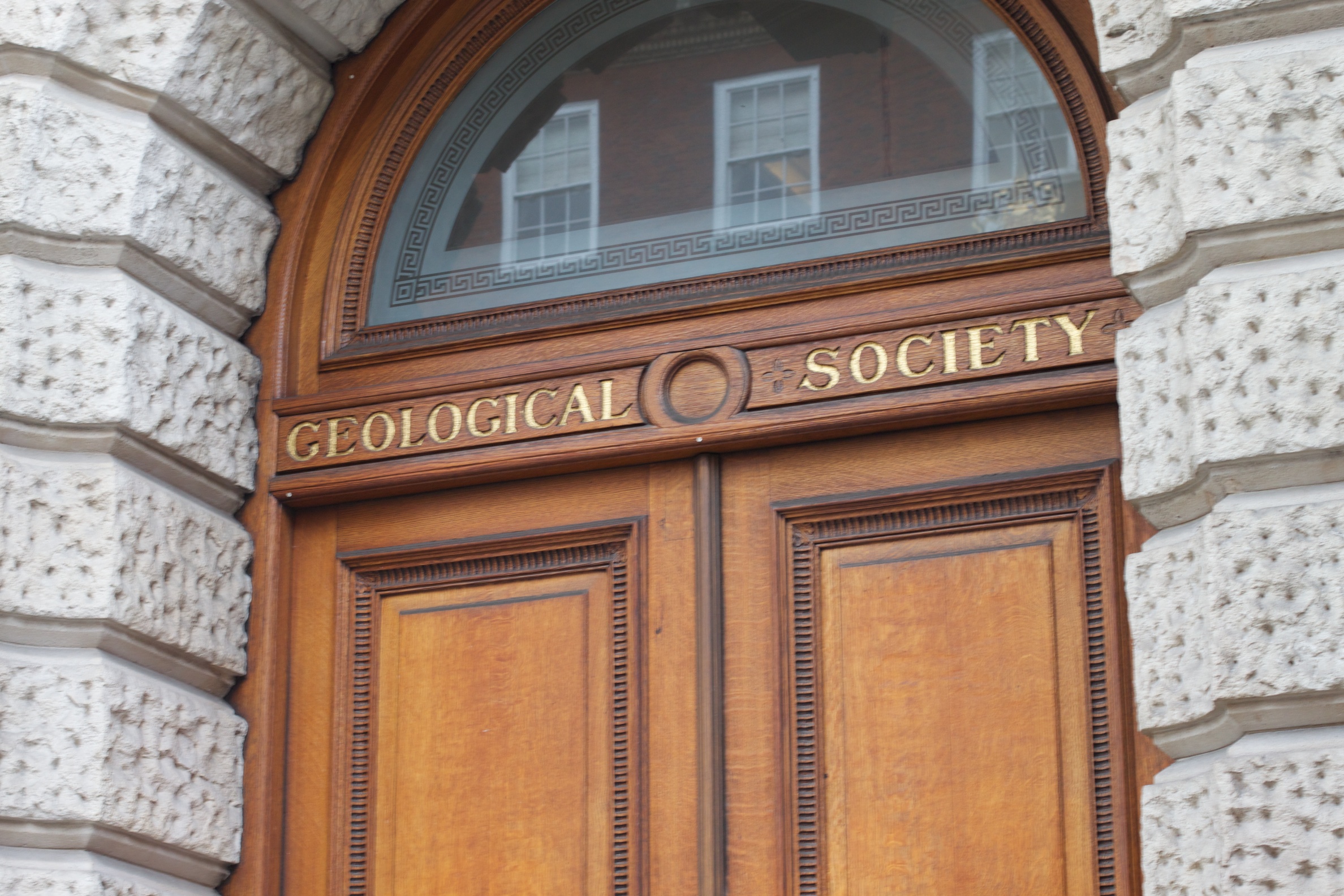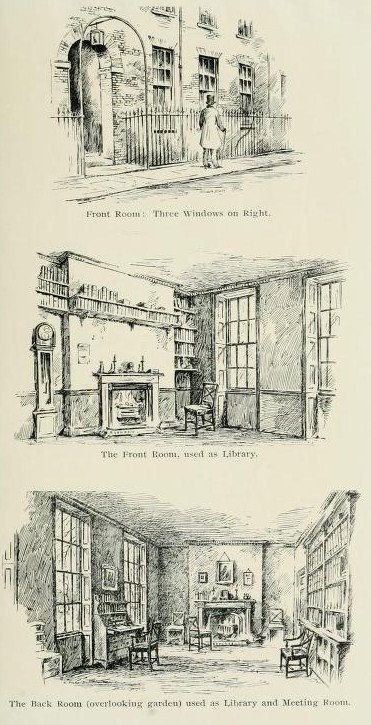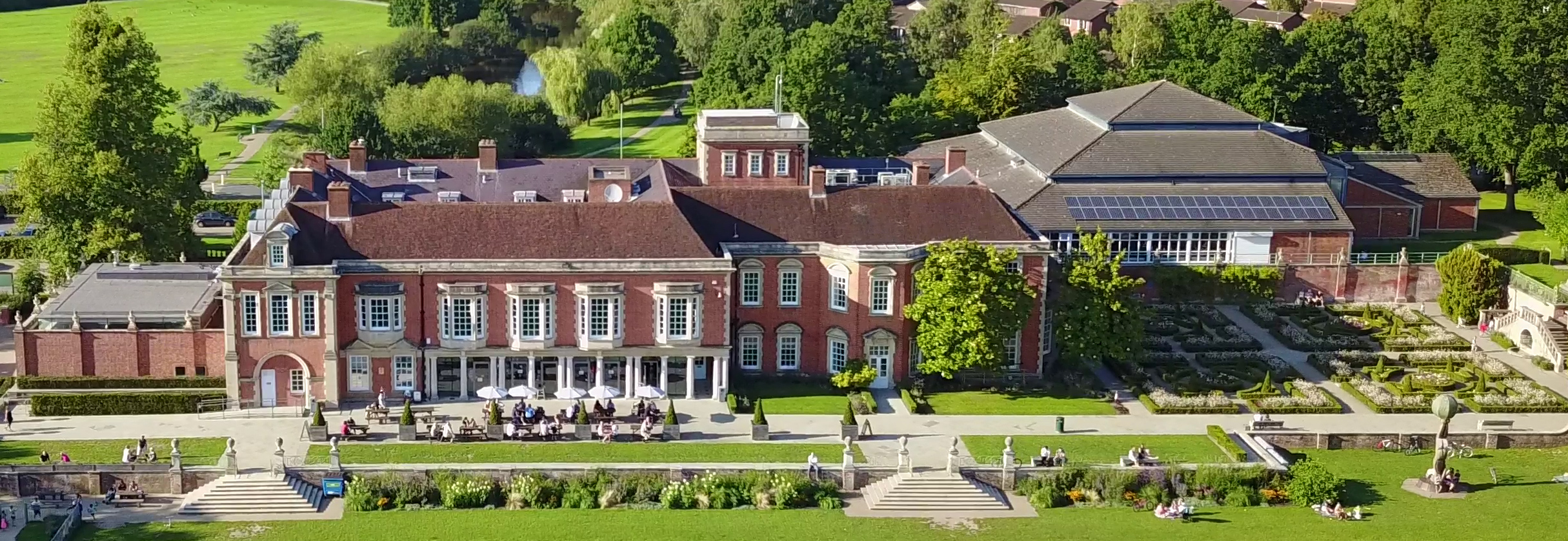|
Martin Tupper (physician)
Martin Tupper, FRS, FGS (17 April 1780 – 8 December 1844) was an English physician originally from Guernsey. The son of John Tupper and Catherine Bowden, he became a respected physician whose patients included the Duke of Wellington. Education and career Tupper attended Exeter College, Oxford, matriculating on 15 January 1802, but left two years later without achieving a degree. As well as becoming a Fellow of the Medical and Chirurgical Society of London in 1819 he was an amateur geologist and a Fellow of the Geological Society. He was also elected a Fellow of the Royal Society in February 1835. Personal life Tupper married Ellin Devis Marris, the daughter of landscape painter Robert Marris (1749–1827) and granddaughter of Arthur Devis, on 7 August 1809. They had five sons, including the poet Martin Farquhar Tupper Martin Farquhar Tupper (17 July 1810 in London – 29 November 1889 in Albury, Surrey) was an English writer, and poet, and the author of '' Proverbial ... [...More Info...] [...Related Items...] OR: [Wikipedia] [Google] [Baidu] |
Fellow Of The Royal Society
Fellowship of the Royal Society (FRS, ForMemRS and HonFRS) is an award granted by the judges of the Royal Society of London to individuals who have made a "substantial contribution to the improvement of natural knowledge, including mathematics, engineering science, and medical science". Fellowship of the Society, the oldest known scientific academy in continuous existence, is a significant honour. It has been awarded to many eminent scientists throughout history, including Isaac Newton (1672), Michael Faraday (1824), Charles Darwin (1839), Ernest Rutherford (1903), Srinivasa Ramanujan (1918), Albert Einstein (1921), Paul Dirac (1930), Winston Churchill (1941), Subrahmanyan Chandrasekhar (1944), Dorothy Hodgkin (1947), Alan Turing (1951), Lise Meitner (1955) and Francis Crick (1959). More recently, fellowship has been awarded to Stephen Hawking (1974), David Attenborough (1983), Tim Hunt (1991), Elizabeth Blackburn (1992), Tim Berners-Lee (2001), Venki Ramakrishnan ( ... [...More Info...] [...Related Items...] OR: [Wikipedia] [Google] [Baidu] |
Fellow Of The Geological Society
The Geological Society of London, known commonly as the Geological Society, is a learned society based in the United Kingdom. It is the oldest national geological society in the world and the largest in Europe with more than 12,000 Fellows. Fellows are entitled to the postnominal FGS (Fellow of the Geological Society), over 2,000 of whom are Chartered Geologists (CGeol). The Society is a Registered Charity, No. 210161. It is also a member of the Science Council, and is licensed to award Chartered Scientist to qualifying members. The mission of the society is: "Making geologists acquainted with each other, stimulating their zeal, inducing them to adopt one nomenclature, facilitating the communication of new facts and ascertaining what is known in their science and what remains to be discovered". History The Society was founded on 13 November 1807 at the Freemasons' Tavern, Great Queen Street, in the Covent Garden district of London. It was partly the outcome of a previous ... [...More Info...] [...Related Items...] OR: [Wikipedia] [Google] [Baidu] |
Guernsey
Guernsey (; Guernésiais: ''Guernési''; french: Guernesey) is an island in the English Channel off the coast of Normandy that is part of the Bailiwick of Guernsey, a British Crown Dependency. It is the second largest of the Channel Islands, an island group roughly north of Saint-Malo and west of the Cotentin Peninsula. The jurisdiction consists of ten parishes on the island of Guernsey, three other inhabited islands (Herm, Jethou and Lihou), and many small islets and rocks. It is not part of the United Kingdom, although defence and some aspects of international relations are managed by the UK. Although the bailiwicks of Jersey and Guernsey are often referred to collectively as the Channel Islands, the "Channel Islands" are not a constitutional or political unit. Jersey has a separate relationship to the Crown from the other Crown dependencies of Guernsey and the Isle of Man, although all are held by the monarch of the United Kingdom. The island has a mixed Britis ... [...More Info...] [...Related Items...] OR: [Wikipedia] [Google] [Baidu] |
Exeter College, Oxford
(Let Exeter Flourish) , old_names = ''Stapeldon Hall'' , named_for = Walter de Stapledon, Bishop of Exeter , established = , sister_college = Emmanuel College, Cambridge , rector = Sir Richard Trainor , undergraduates = 346 (2019/2020) , visiting_students = 26 , graduates = 227 , endowment = £74.5 million (2018) , location = Turl Street, Oxford OX1 3DP , coordinates = , location_map = Oxford (central) , homepage = , boat_club = Exeter College Boat Club , JCR JCR, shield = Exeter College Oxford Coat Of Arms (Motto).svg , shield_size = 150px , blazon = ''Argent, two bends nebuly sable'' (arms of Stapledon) ''within a bordure of the last charged with eight pairs of keys, addorsed and interlaced in the rings, the wards upwards, or''. Exeter College (in full: The Rector and Scholars of Exeter College in the University of Oxford) ... [...More Info...] [...Related Items...] OR: [Wikipedia] [Google] [Baidu] |
Medical And Chirurgical Society Of London
The Medical and Chirurgical Society of London was a learned society of physicians and surgeons which was founded in 1805 by 26 personalities in these fields who had left the Medical Society of London (founded 1773) because of disagreement with the autocratic style of its president, James Sims. Among its founders there were William Saunders (1743–1817), its first president; John Yelloly (1774–1842), Sir Astley Cooper (1768–1841), the first treasurer; Alexander Marcet (1770–1822) and Peter Mark Roget (1779–1869). According to its charter, the Medical and Chirurgical Society of London was founded "for the purpose of conversation on professional subjects, for the reception of communications and for the formation of a library" and served "several branches of the medical profession". In 1834 the Society received a Royal charter, thus becoming the Royal Medical and Chirurgical Society of London. This society merged with several other specialist societies, from 1907 to 1909 ... [...More Info...] [...Related Items...] OR: [Wikipedia] [Google] [Baidu] |
Geological Society
The Geological Society of London, known commonly as the Geological Society, is a learned society based in the United Kingdom. It is the oldest national geological society in the world and the largest in Europe with more than 12,000 Fellows. Fellows are entitled to the postnominal FGS (Fellow of the Geological Society), over 2,000 of whom are Chartered Geologists (CGeol). The Society is a Registered Charity, No. 210161. It is also a member of the Science Council, and is licensed to award Chartered Scientist to qualifying members. The mission of the society is: "Making geologists acquainted with each other, stimulating their zeal, inducing them to adopt one nomenclature, facilitating the communication of new facts and ascertaining what is known in their science and what remains to be discovered". History The Society was founded on 13 November 1807 at the Freemasons' Tavern, Great Queen Street, in the Covent Garden district of London. It was partly the outcome of a previo ... [...More Info...] [...Related Items...] OR: [Wikipedia] [Google] [Baidu] |
Arthur Devis (1712–1787)
Arthur Devis (19 February 1712 – 25 July 1787) was an English artist, half-brother of the painter Anthony Devis (1729–1816), and father of painters Thomas Anthony Devis (1757–1810) and Arthur William Devis (1762–1822). His place in the pages of art history is generally as a painter of the type of portrait now called a conversation piece. Arthur was taught by the Flemish painter Peter Tillemans. Though his early work was in part as a landscape artist, he also drew upon family connections to win clientele for portraits of the members of pro-Jacobite Lancashire families. In fact, by 1737 he had gravitated to portrait painting, setting up a studio in London. In London Devis acquired a considerable reputation, though his success was to follow a certain parabola. Faced with other fashionable artistic currents represented by the work of such painters as Joshua Reynolds and Johann Zoffany, his commissions declined and he was obliged to move to restoring pictures. His mar ... [...More Info...] [...Related Items...] OR: [Wikipedia] [Google] [Baidu] |
Martin Farquhar Tupper
Martin Farquhar Tupper (17 July 1810 in London – 29 November 1889 in Albury, Surrey) was an English writer, and poet, and the author of ''Proverbial Philosophy''. Early life Martin Farquar was the eldest son of Dr. Martin Tupper (1780–1844), a medical man highly esteemed in his day, who came from an old Guernsey family, by his wife Ellin Devis Marris (d. 1847), only child of Robert Marris (1749–1827), a landscape painter (by his wife Frances, daughter of the artist Arthur Devis). Martin Tupper received his early education at Charterhouse. In due course he was transferred to Christ Church, Oxford, where he took his degree of B.A. in 1832, of M.A. in 1835 and of DCL in 1847. At Christ Church, as a member of the Aristotle Class, he was a fellow student with many distinguished men, including the Marquess of Dalhousie, the Earl of Elgin, William Ewart Gladstone and Francis Hastings Doyle. Having taken his degree of M.A., Tupper became a student at Lincoln's Inn and was ... [...More Info...] [...Related Items...] OR: [Wikipedia] [Google] [Baidu] |
South Hill Park
South Hill Park is a English country house and its grounds, now run as an arts centre. It lies in the Birch Hill estate to the south of Bracknell town centre, in Berkshire. History Construction by Watts The original South Hill Park mansion was built in 1760 for William Watts and his wife (better known as Begum Johnson) for his retirement from service as a senior official of the Bengal Government. The house was originally on two floors, built in the Italian manner, decorated with stucco, with a front entrance and tower in the baroque style. The grounds included of common land, which William Watts enclosed. In return he built almshouses on a site opposite Easthampstead Parish Church about half a mile away. The almshouses were eventually demolished by order of the Marquess of Downshire in 1826. Other private owners After the death of Watts, the Honourable Henry Bouverie lived in the house until 1787. He was followed by Sir Stephen Lushington until 1807, when George Ca ... [...More Info...] [...Related Items...] OR: [Wikipedia] [Google] [Baidu] |
Edmund Pery, 1st Earl Of Limerick
Edmund Henry Pery, 1st Earl of Limerick PC (8 January 1758 – 7 December 1844), styled Lord Glentworth between 1794 and 1800, and Viscount Limerick until 1803, was an Irish peer and politician. Pery was the son of William Cecil Pery, 1st Baron Glentworth and his first wife, Jane Walcott, daughter of John Minchin Walcott, and educated at Trinity College Dublin. He married Mary Alice, the daughter of Henry Ormsby of County Mayo, by his wife Mary Hartstonge, in 1783, and they had at least eight children. Mary Alice was the heiress of her uncle, Sir Henry Hartstonge, 3rd Baronet, who left her substantial property in the south of Ireland. She died in 1850. Pery was elected to the Irish Parliament as the Member of Parliament for Limerick in 1786 and held the seat until 1794, when he inherited his father's barony and took his seat in the Irish House of Lords. As a politician, he was a vocal Unionist. He held the office of Keeper of the Signet and Privy Seal of Ireland between 17 ... [...More Info...] [...Related Items...] OR: [Wikipedia] [Google] [Baidu] |
1780 Births
Year 178 ( CLXXVIII) was a common year starting on Wednesday (link will display the full calendar) of the Julian calendar. At the time, it was known as the Year of the Consulship of Scipio and Rufus (or, less frequently, year 931 ''Ab urbe condita''). The denomination 178 for this year has been used since the early medieval period, when the Anno Domini calendar era became the prevalent method in Europe for naming years. Events By place Roman Empire * Bruttia Crispina marries Commodus, and receives the title of '' Augusta''. * Emperor Marcus Aurelius and his son Commodus arrive at Carnuntum in Pannonia, and travel to the Danube to fight against the Marcomanni. Asia * Last (7th) year of ''Xiping'' era and start of ''Guanghe'' era of the Chinese Han Dynasty. * In India, the decline of the Kushan Empire begins. The Sassanides take over Central Asia. Religion * The Montanist heresy is condemned for the first time. Births * Lü Meng, Chinese general (d. 220) * ... [...More Info...] [...Related Items...] OR: [Wikipedia] [Google] [Baidu] |
1844 Deaths
In the Philippines, it was the only leap year with 365 days, as December 31 was skipped when 1845 began after December 30. Events January–March * January 15 – The University of Notre Dame, based in the city of the same name, receives its charter from Indiana. * February 27 – The Dominican Republic gains independence from Haiti. * February 28 – A gun on the USS ''Princeton'' explodes while the boat is on a Potomac River cruise, killing two United States Cabinet members and several others. * March 8 ** King Oscar I ascends to the throne of Sweden–Norway upon the death of his father, Charles XIV/III John. ** The Althing, the parliament of Iceland, is reopened after 45 years of closure. * March 9 – Giuseppe Verdi's opera '' Ernani'' debuts at Teatro La Fenice, Venice. * March 12 – The Columbus and Xenia Railroad, the first railroad planned to be built in Ohio, is chartered. * March 13 – The dictator Carlos Antonio López becomes first President ... [...More Info...] [...Related Items...] OR: [Wikipedia] [Google] [Baidu] |









.jpg)